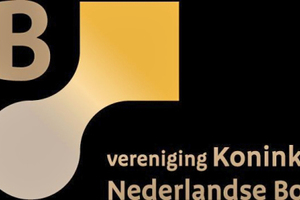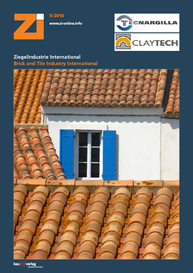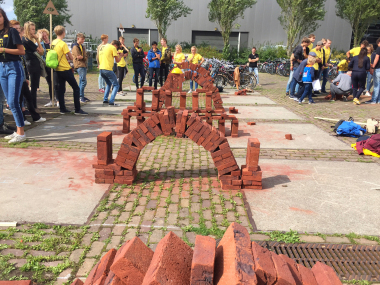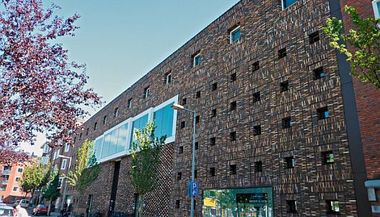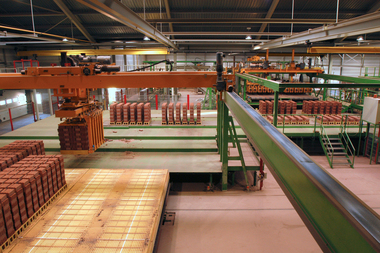Dutch ceramic industry optimistic about 2016
In 2015, Statistics Netherlands recorded the highest growth in the Dutch economy since 2007 (1.9 %). With a production increase of 7 % overall, 24 % residential new-build and 17 % reconstruction and renovation of existing houses (information from EIB), the construction sector made an important contribution to this encouraging economic growth. The clay brick and tile industry was also able to profit from this.
The Royal Dutch Association for Building Ceramics (KNB) is the association for the entire Dutch ceramic industry. Nationally and internationally, the KNB represents the shared interests of this industry in the areas environment, energy, raw materials, sustainability, standards, working conditions and vocational training.
KNB wants to make a change for the building ceramics industry in the Netherlands and regularly invites local, national and European politicians to working visits in the industry.
Level playing field
Right at the end of 2015, the Dutch Tax Plan for 2016 finally made a contribution to a level playing field. This means an equal fiscal footing with the neighbouring countries for gas usage in the mineralogical transformation process such as the manufacturing of building ceramics. This scheme serves to strengthen the competitive position of the Dutch industry.
Own initiative
With the existing participation in ETS, MJA3 (energy efficiency agreement) and, more recently, the participation in the Gelders Energie Akkoord (regional energy agreement), the sector is taking responsibility for making a contribution towards solving the energy and climate issues of our time. The KNB-Round Table Conference on Sustainability, which was organized with the Netherlands Enterprise Agency (RVO) in last autumn, provided valuable initiatives for the third period of the sectoral Sustainability Agenda. Agreements within the framework of the new Collective Agreement for workers in the Dutch Brick Industry 2015 to 2017 are shaping the policy for the promotion of the sustainable deployment of staff and the recruitment of people in the sector with a labour disability (including entrepreneurship).
Future proof
A level playing field, the possibility of fair competition and the ability to safeguard assets are the essential ingredients for national and European policies that apply to the ceramics industry. This includes responsibility and responsible entrepreneurship of the industry. The Netherlands has to focus on a sustainable future with energy-neutral buildings, improved biodiversity, a safe living environment and plenty of jobs.
Positive development in the construction industry
Statistics Netherlands speaks of the largest growth since 2007. The EIB speaks of a spectacular increase.
According to the Buildsight forecasts that are followed by KNB, 46 950 houses were completed in 2015 (+19 %). Statistics Netherlands said that building permits had been issued for 53 533 new homes of which the majority were given (46 012) to builders for the owner-occupied and rental market and other private commissioning authorities.
Clay brick and roofing tile industry
The domestic sales of Dutch facing bricks were able to benefit from the improving newbuild market. Despite this development (+14 %), the total sales of the facing brick eventually had to take the back seat (-2 %) under the influence of decreasing exports (-19 %).
Sales of clay pavers remained more or less unchanged. It is encouraging that sales of clay pavers in packages for mechanical laying has risen by 10 %.
The sales of clay roofing tiles developed reasonably, especially under the influence of the continued growth on the renovation market. The clay roofing tile market share has come under pressure with the use of roofing tiles made of other materials in large new-build products (based on low total investment costs) and the displacement of roofing tiles as such because of PV solutions used in renovation.
Outlook
The outlook for the construction industry is positive for the coming years. The total building volume will continue to grow in sales and volume. This especially applies to the construction of new buildings which will continue to grow significantly in 2016. After this period, double-digit growth rates cannot be maintained. Despite the increasing number of households, the growth of building permits for new homes is stagnating. The maintenance and renovation markets will continue to contribute to the growth of building products thanks to the specifications in the Energy Agreement and the increasing transformation of existing buildings. The use of bricks is very limited here, however. Partly due to a disappointing recovery of non-residential construction, Buildsight is anticipating a levelling out of growth in clay brick façades with regard to all types of construction (including renovation) in the coming years.
KNB Vereniging Koninklijke
www.knb-keramiek.nl

